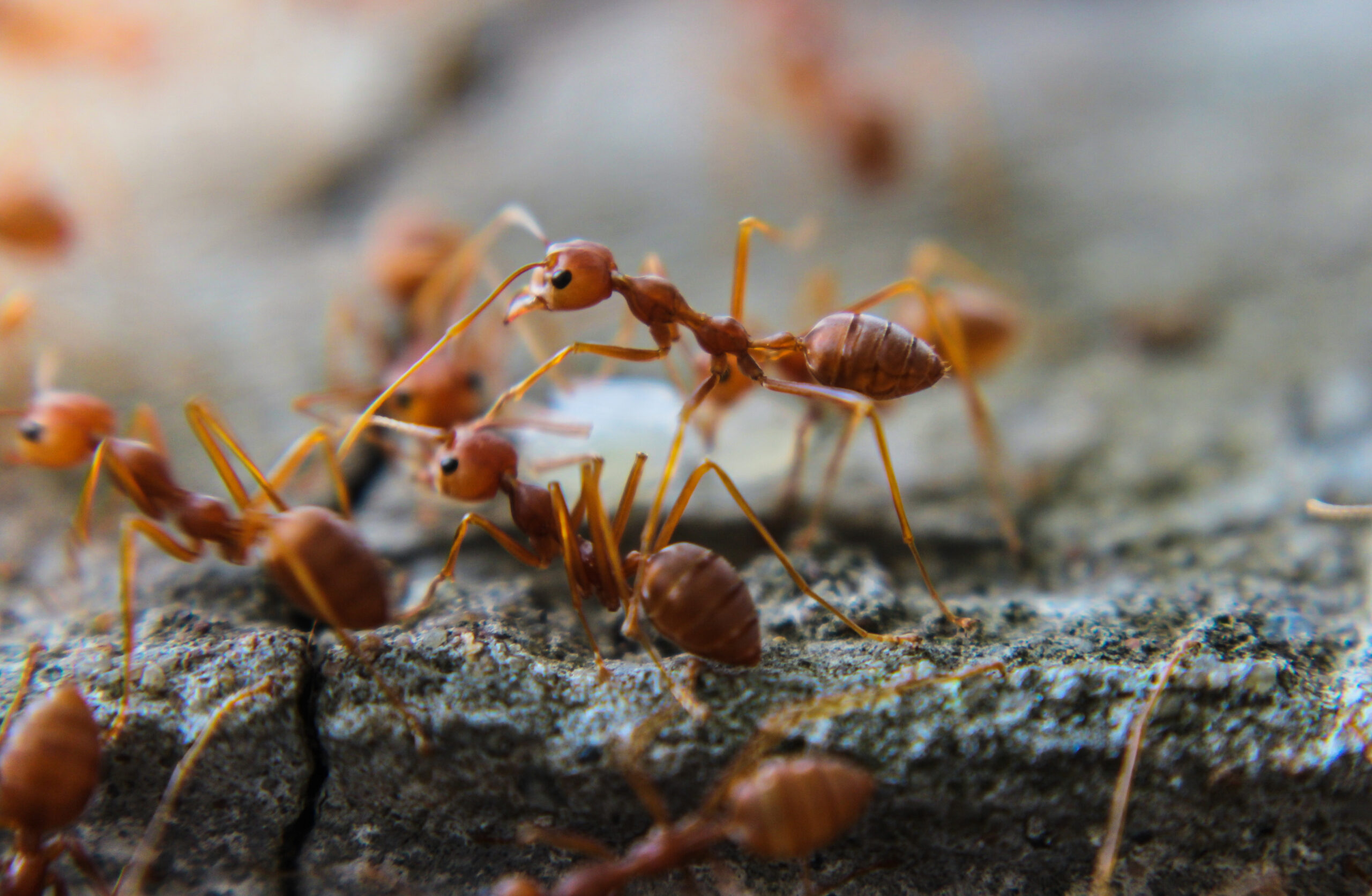They say that everything’s bigger in Texas, and that (unfortunately) includes our ant problems. Ants live in ever-growing colonies produced by queens that are protected within the nest as the workers go out and forage for more food. The longer that they’re are left alone, the larger the colony will grow. Each species has its own preferences (habits, diets, etc.), so it’s important to know the difference between the popular Texas species. Let’s dive into the lives of 6 Texas ants and why they are so frustrating to have in the home.
Acrobat Ants
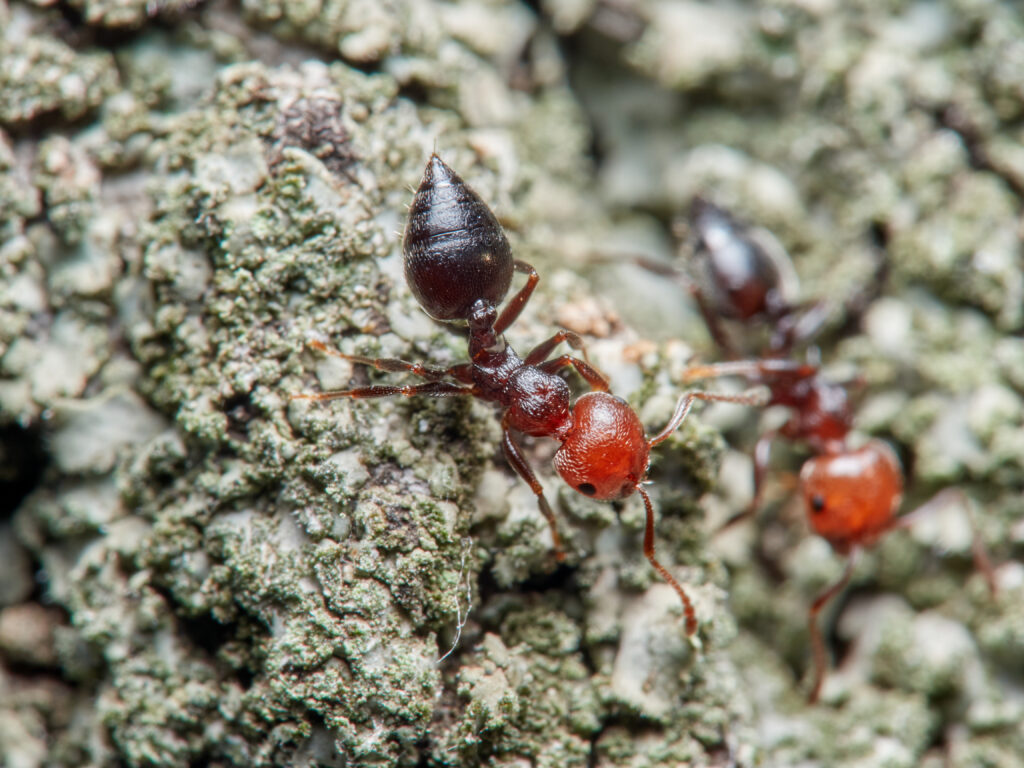
Appearance: Multicolored; usually a combination of black, red, and yellow-brown; heart-shaped abdomen; about 1/8 of an inch long
Diet: Sweets, protein, and honeydew from aphids
Habitat: Damp areas, including under stumps, in trees, under stones, and in dead wood
These pests get their strange name from the defensive stance they take when disturbed. Acrobat ants will lift their abdomen above their heads to show that they’re threatened. They also produce a strong odor while they perform their acrobatics in a desperate attempt to ward off their enemies. Acrobat ants are active during the day and invade homes through any opening they can find, including pipes, doorways, and utility lines. Their gymnastics routine is entertaining, but it’s best to not get too close. They are aggressive and will bite when provoked, so use caution around an acrobat ant colony if you happen to find one.
Carpenter Ants
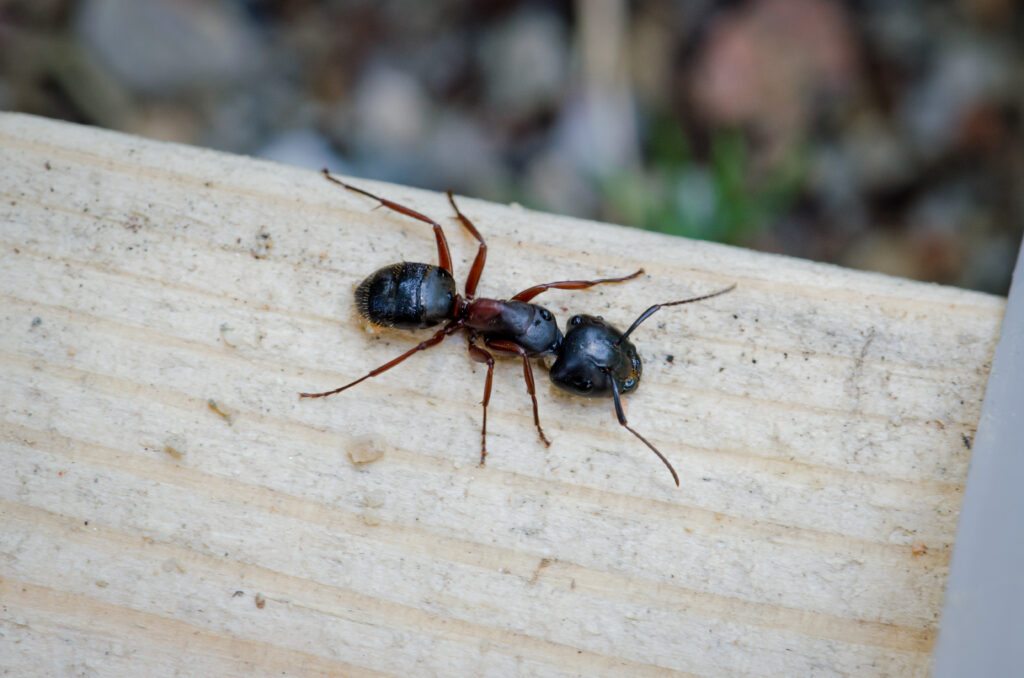
Appearance: Reddish-brown; thin waist; bent antennae; large mandibles (mouth parts); up to 1 inch long
Diet: Insects, honeydew from aphids, meats, pet food, honey, and syrup
Habitat: Inside trees or the wooden parts of a home, such as the siding, beams, wood shingles, and firewood
These might be the worst of this list because of the major damage they cause to any building they invade. Carpenter ants carve their tunnels into wood along the grain using their strong mandibles, which damages and weakens the wood exponentially. They usually invade from winter through spring to escape the cold, and our homes provide enough warmth for them to create new colonies. If you see any winged carpenter ants around, they’re scouting new locations for their own colonies. These insects are different from termites in that they don’t eat the wood they chew through, but they will bite anyone who disturbs their nest.
Crazy Ants
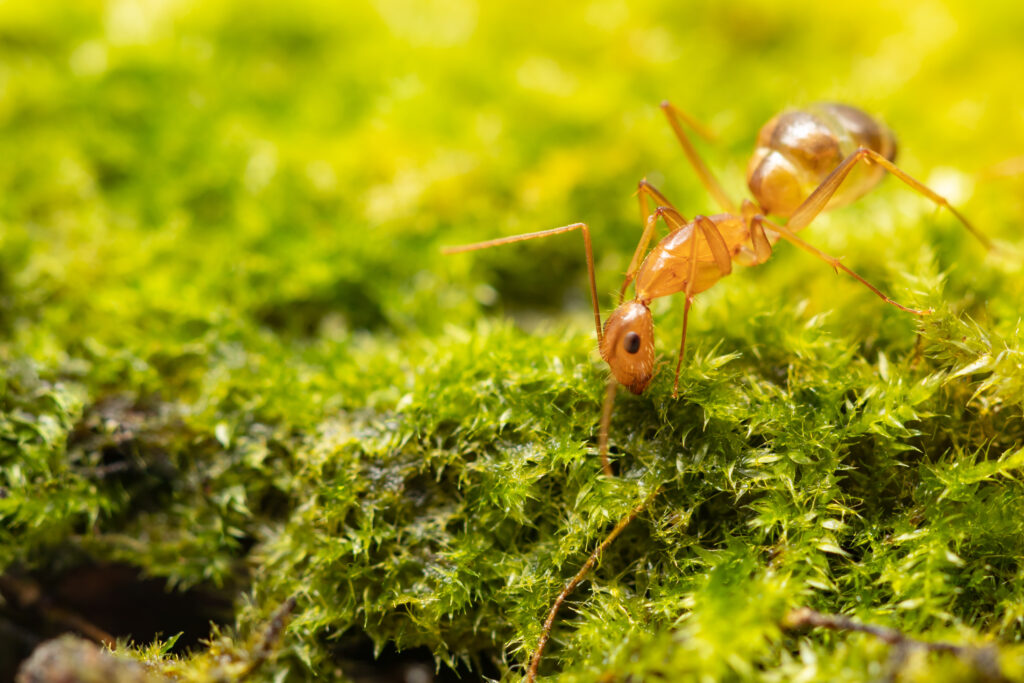
Appearance: Dark gray or black; long legs; about 1/16 of an inch long
Diet: Insects, soil, larvae, grease, and sweets
Habitat: Mostly outdoors in soil, under leaf litter, and under above-ground pools
These pests have the most humorously straightforward names of them all. Crazy ants got their name for the erratic patterns they run in while they’re out and about. They get even “crazier” when their nest is disturbed since they want to throw their enemies off their colony’s trail. Often invading in winter, these pests are technically beneficial for how many insects they eat. They will devour any larvae or adult insects near their nest. Crazy ants can also nest inside soil, so even the greenery that’s never seen the outdoors can still hide a crazy ant colony.
Fire Ants
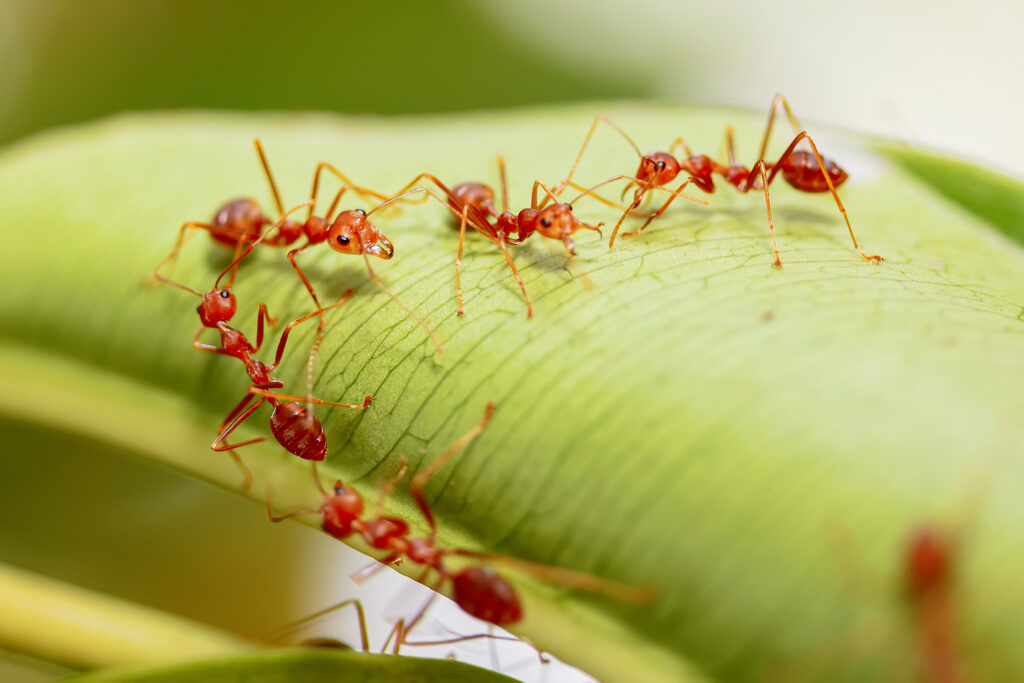
Appearance: Red or black; large eyes; up to 1/4 of an inch long
Diet: Insects, sweets, and honeydew from aphids
Habitat: Their own dirt mounds that are 18 inches tall and don’t have entry holes
Fire ants are (tragically) one of the top ant species in Texas. They thrive in the sunlight, so their dirt mounds are built in the sunniest parts of our yards and fields. Although they only live for 30 days, the insects can cause major issues for homeowners if they get inside a house. They’ll eat anything, so these pests scavenge Texas homes for food and water during the warmer months. Their mounds need to be treated to actually eliminate the colony, which is easier said than done once they unleash their painful bites. The strong venom of fire ants causes the site to blister and burn after the bite occurs.
Odorous House Ants
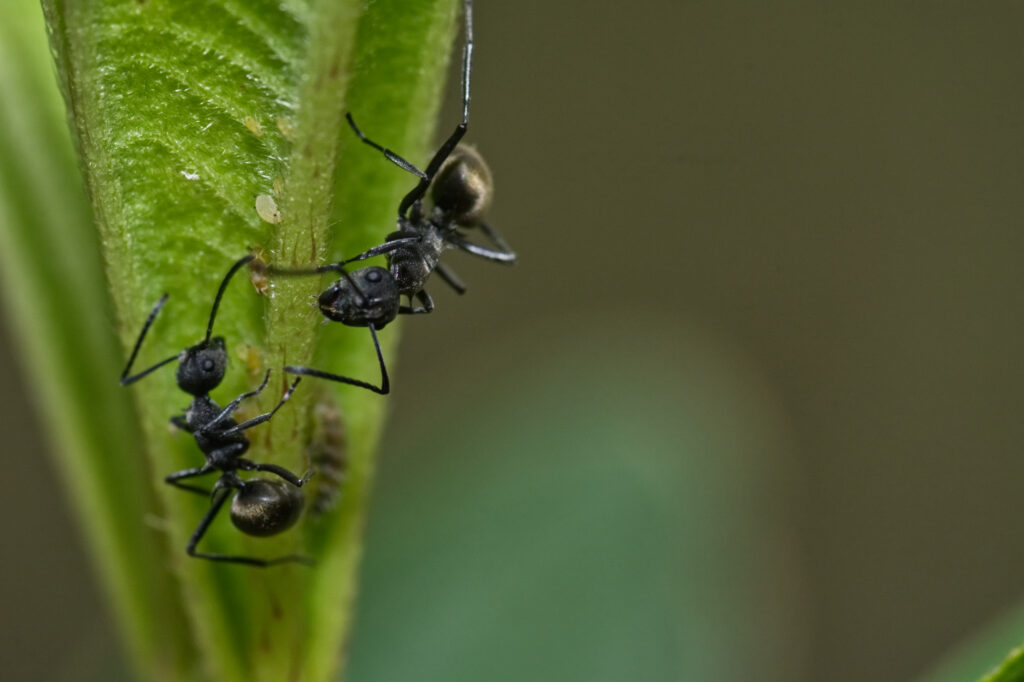
Appearance: Dark brown or black; about 1/8 of an inch long; have stingers
Diet: Sweets, grease, insects, dairy, and meats
Habitat: Want to always be indoors, especially under carpet, in walls, or behind paneling
True to their name, odorous house ants want to stay indoors all the time. They’re often seen during rainstorms when they’re desperate to retreat into a dry space. Their colonies are unique in that they have at least two queens, which means that their numbers grow even quicker. Speaking of which, odorous house ants are some of the speediest around, making them difficult to catch. The “odorous” part of their name stems from their defensive tactic of releasing a smelly chemical when they’re touched or threatened. The scent is similar to rotten coconut or bleu cheese, neither of which are ever pleasant for us.
Pharaoh Ants
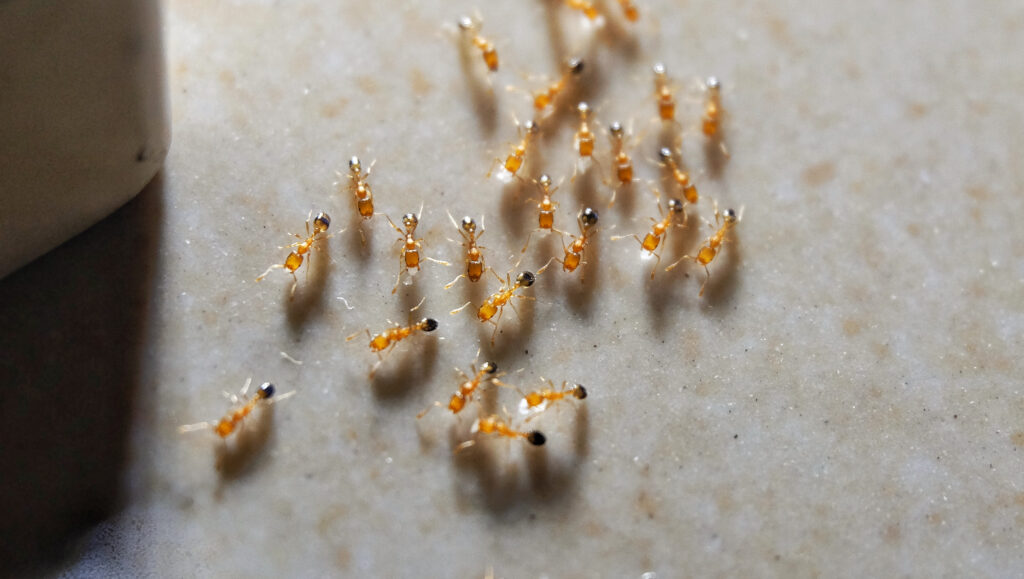
Appearance: Tan or yellow; 1/12 of an inch long; dark-colored abdomen
Diet: Sweets, baked goods, greasy or fatty foods, and protein
Habitat: Mostly indoors; prefer warm and dark areas like walls, cracks, floorboards, sockets, and insulation
Also known as sugar ants, pharaoh ants live most of their lives indoors. They don’t bite or sting, so they cause problems by contaminating the food they find. These insects are often found in narrow, empty spaces that hide their presence. They don’t usually invade in huge swarms, but their colonies still have large numbers. They often invade hospitals, offices, and factories, which isn’t ideal since they are some of the most disease-ridden pests around. They’re carriers of multiple diseases, including salmonella, clostridium, and staphylococcus. Though they’re not very aggressive, pharaoh ants need to be eliminated before they can infect any areas.
No One Knows Texas Ants Better Than Romney
Each of these pests bring trouble wherever they go, so it’s essential to end your ant issues as soon as they begin. At Romney Pest Control, we are fully licensed and experienced in providing efficient solutions for all kinds of pest problems. Our trained technicians begin every service with a thorough inspection to find each area of pest activity, then determine which treatments would be the best for your specific pest concerns. We leave no stone unturned in our quest to keep the pests away from your home or business. Contact us today for more information on our reliable pest control services!
Citations
Ants. (n.d.). Pointe Pest Control. Retrieved April 23, 2024, from https://pointepestcontrol.com/services/ants/
Insects. (n.d.). Texas Parks & Wildlife. Retrieved April 23, 2024, from https://tpwd.texas.gov/education/resources/texas-junior-naturalists/be-nature-safe/insects
Lennon, L. (n.d.). Native ants. Texas A&M AgriLife Extension: Texas Imported Fire Ant Research and Management Project. Available at https://fireant.tamu.edu/learn/native-ants/ (Accessed on April, 23, 2024).
Merchant, M. (Dr.). (n.d.). Identifying household ants. Texas A&M AgriLife Extension. Available at https://citybugs.tamu.edu/factsheets/household/ants-house/ent-2013/ (Accessed April 23, 2024).

